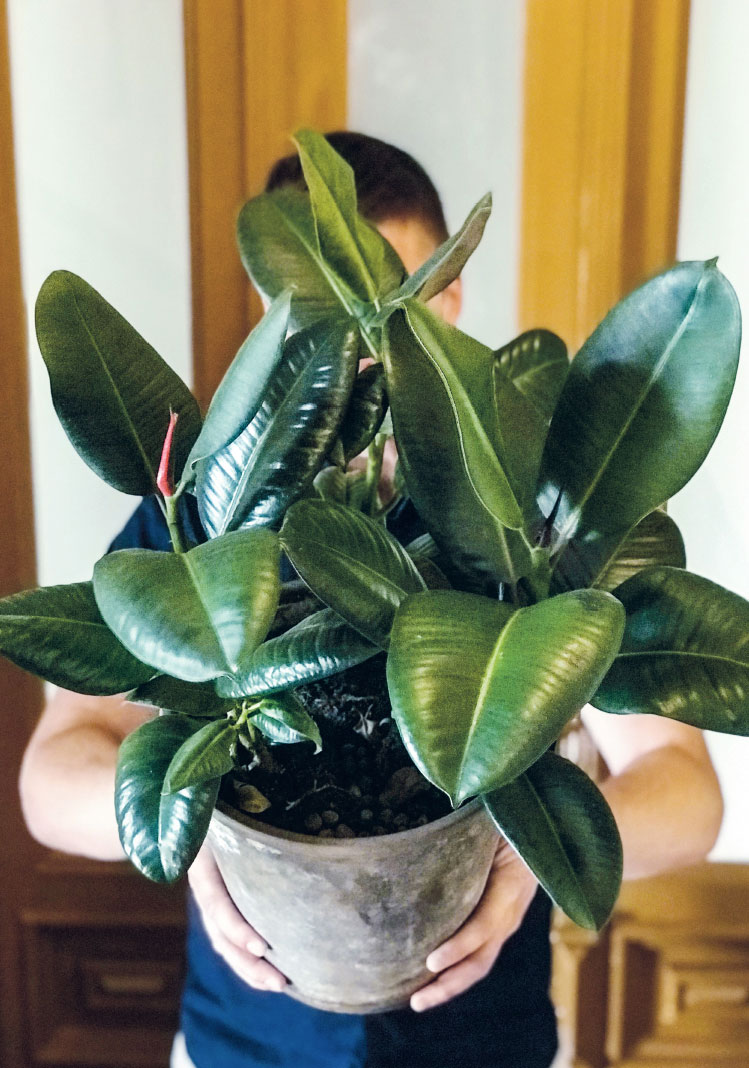 LIGHT
LIGHTThis handsome plant belongs to the fig family. Its leaves contain a milky fluid known as latex, which was formerly used in the production of rubber – hence the name. The rubber plant is extremely easy to look after and can put up with a lot. The only thing it doesn’t like is overwatering and being moved around too much. The plant has attractive, shiny, leathery leaves that can benefit from a wipe with a damp cloth once a month in order to retain its sheen and to ensure optimal light uptake.
 LIGHT
LIGHT
The rubber plant prefers good light conditions. If left in bright sunlight, the leaves will turn more burgundy-brown than green.
 WATERING
WATERING
Water regularly, whenever the top few centimetres (about 1in) of soil are dry. Water weekly during the warmer months, and a few times a month during the rest of the year. The darker and the cooler the room, the less water it needs.
 SOIL
SOIL
Use ordinary potting compost with a layer of leca balls in the bottom. For good drainage, you can mix some leca balls in with the soil. It’s fine with repotting every other year and will happily share a large pot with other rubber plants.
 FEEDING
FEEDING
Feed a few times a month with liquid organic plant food during spring and summer. Give it little or no plant food during the colder months.
 ORIGIN
ORIGIN
The rubber plant originates from India and Malaysia, where it can grow up to 40m (130ft) tall.
 MISCELLANEOUS
MISCELLANEOUS
Toxic to pets – and the sap in the leaves can cause skin irritations in people.
